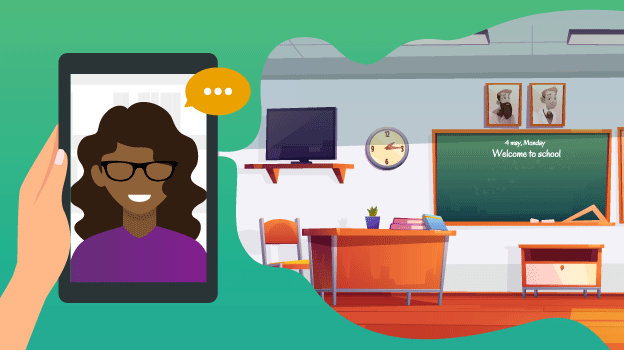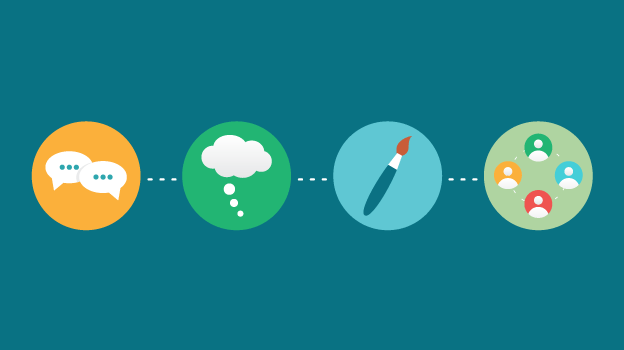
Edtech definitions every teacher should know
The wide variety of acronyms found in the world of edtech can be confusing. There is also quite a bit of overlap — as well as misuse — of terms that can make navigating the literature on the subject of edtech unhelpful. We hope to give you a relatively simple roadmap to help navigate the thickets of education technology buzzwords and phrases that tend to appear in discussions and debates as well as a few education-based phrases that are often conflated or interchanged leading to a lack of clarity.
Here is a quick terminology list developed with the help of quality online sources:
-
Augmented Reality (AR)
This is a digital overlay onto reality. So when viewing “reality” through the camera or mobile screen, digital tools augment or add to what you see.
“Augmented reality (AR) is an interactive experience of a real-world environment where the objects that reside in the real-world are ‘augmented’ by computer-generated perceptual information, sometimes across multiple sensory modalities, including visual, auditory, haptic, somatosensory, and olfactory.” - Wikipedia
-
Virtual Reality (VR)
Where AR is an overlay of digital graphic and other sensory layers, Virtual Reality is the full immersion into an interactive digital world, that stimulates 100% of the visual and auditory senses.
“A three-dimensional, computer generated environment which can be explored and interacted with by a person. That person becomes part of this virtual world or is immersed within this environment and whilst there, is able to manipulate objects or perform a series of actions.” - The Virtual Reality Society
-
Mixed Reality (MR)
Sometimes referred to as Hybrid Reality, the term refers in essence to the next iteration of Augmented Reality.
“Mixed Reality (MR), sometimes referred to as hybrid reality, is the merging of real and virtual worlds to produce new environments and visualizations where physical and digital objects co-exist and interact in real time.” - Wikipedia
-
Artificial Intelligence vs. Machine Learning
A really common error that is made quite often is people using these two terms interchangeably.
Artificial Intelligence (AI) is a product of the much older computational concept of “logical machines”:
“Artificial intelligence (AI), the ability of a digital computer or computer-controlled robot to perform tasks commonly associated with intelligent beings. The term is frequently applied to the project of developing systems endowed with the intellectual processes characteristic of humans, such as the ability to reason, discover meaning, generalize, or learn from past experience.” - Encyclopedia Britannica
Whereas Machine Learning (ML) is in turn a byproduct of AI:
“Machine learning is an artificial intelligence (AI) discipline geared toward the technological development of human knowledge. Machine learning allows computers to handle new situations via analysis, self-training, observation and experience.” - Techopedia
-
Deep Learning vs. Deep Learning
Deep Learning (Tech)
Where machine learning is a part of the broader umbrella of artificial intelligence, deep learning is in turn a function or derivative of machine learning.
“The hierarchy of concepts allows the computer to learn complicated concepts by building them out of simpler ones. If we draw a graph showing how these concepts are built on top of each other, the graph is deep, with many layers. For this reason, we call this approach to AI deep learning.” - “Deep Learning” book by Ian Goodfellow and Yoshua Bengio and Aaron Courville
Deep(er) Learning (Ed)
The Deep(er) Learning concept is a reaction to the pressure and consequences of tandardized testing.
“The six Deeper Learning competencies: master core academic content, think critically and solve complex problems, communicate effectively, work collaboratively, learn how to learn, develop academic mindsets.” - Hewlett Foundation
-
Differentiated Learning vs. Personalized Learning vs. Individualized Learning
Differentiated Learning
This way of learning (and teaching) acknowledges that everyone learns differently.
“Ensuring that what a student learns, how he or she learns it, and how the student demonstrates what he or she has learned is a match for that student’s readiness level, interests, and preferred mode of learning.” - Carol Ann Tomlinson
Individualized Learning
Individualized learning is a tool within the Differentiated learning toolbox. However, definitions are not agreed upon. Most online references hold that individualized learning refers exclusively to the pace of instruction.
“Instruction calibrated to meet the unique pace of various students is known as individualized learning. If differentiation is the ‘how’ then individualization is the ‘when’.” - Dale BasyeM
Personalized Learning
Probably the most commonly used term, it is most often used as an umbrella phrase that encompasses instruction that is individualized and differentiated.
“The term personalized learning, or personalization, refers to a diverse variety of educational programs, learning experiences, instructional approaches, and academic-support strategies that are intended to address the distinct learning needs, interests, aspirations, or cultural backgrounds of individual students.” - Glossary of Educational Reform
Resources
- Wikipedia - Augmented Reality
- What is Virtual Reality?
- Wikipedia - Mixed Reality
- Artificial intelligence
- Machine Learning
- Deeper Learning Defined
- Carol Ann Tomlinson
- Personalized Learning
- Deep Learning,An MIT Press book: Ian Goodfellow and Yoshua Bengio and Aaron Courville
- Personalized vs. differentiated vs. individualized learning
Visit our Blog for insightful posts on edtech for K-12 and Higher Ed.







